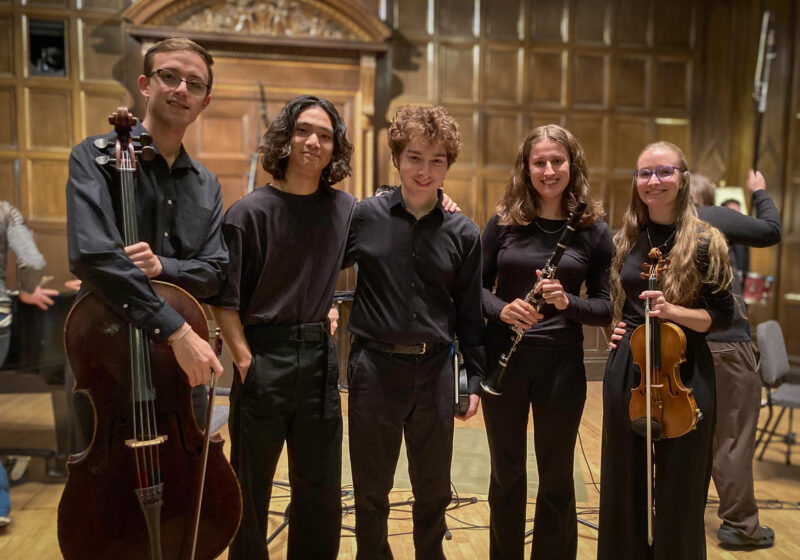The National Institutes of Health has recently awarded the UR Medical Center $26 million to found an influenza research center. The grant, provided by the National Institute of Allergy and Infectious Diseases, is set to be alloted over seven years and will fund the initiation as well as the research efforts of the New York Influenza Center of Excellence (NYICE). Three universities – UR, Cornell and the University of Tennessee at Knoxville – will comprise the NYICE.
A larger network of six similar research initiatives with a total funding of more than $138 million is currently being set up around the country.
At UR, eight principal investigators and an undetermined number of support staff (post-doctorates, graduate students, etc.) will be working out of four UR laboratories on four major NYICE projects. The majority of these projects will last for at least seven years and most likely continue for longer.
The reason for this flurry of funding from the coffers of the NIH has to do with the nature of the flu. Influenza, in all of its many forms, is a fearsome disease with a history of lethality. Each year, hundreds of thousands of people are hospitalized or killed by influenza and influenza-related complications in the United States alone.
The flu is the number one preventable cause of death (excluding non pathogen-related killers like cancer or heart disease) in the United States. Although a vaccine providing protection against the flu does exist, it is not universally distributed among the majority of the population nor is it permanently effective.
Furthermore, H5N1, an especially lethal iteration of avian [bird] flu, has continued to spread uncontrollably through the bird populations of the world. This progression means increased human exposure to the virus and faster and more widespread cross-species transmission, potentially resulting in a global pandemic. Due to the rapidly evolutionary nature of the influenza virus, vaccinations like those used to eradicate the smallpox virus would be an ultimately ineffectual defense.
“The current strategy of relying on vaccines that match each year’s particular strain imposes severe limitations on our ability to prepare for a pandemic,” Professor of Medicine and of Microbiology and Immunology at the Medical Center John Treanor, M.D. said.
The mission of NYICE is, therefore, comprised of numerous parts. First, through strictly clinical research (analyzing cases of flu infection documented in medical literature and records), researchers hope to generate some amount of reference data documenting the virus’ behavior patterns and capabilities. This is a crucial step because the complicated adaptation mechanisms utilized by pandemic flu strains are not currently understood.
Second, by analyzing blood work from infected patients and running number of experiments, researchers will try to assess the feasibility of developing second-generation flu vaccinations. Third, the process will repeat, expand, evolve and progress for at least the next seven years or longer.
“In an ideal world, we would be able to define the characteristics of a vaccine that wouldn’t have to be changed annually,” Associate Professor of Microbiology and Immunology at URMC and Co-Director of the NYICE David Topham, Ph.D. said. “You want to immunize people so that the immune system is universally responsive to all forms of the influenza virus. This trait is particularly important for fighting pandemic flu strains, which are totally unpredictable.”
The decidedly ambitious mission of the NYICE and its sister institutions is therefore, according to Topham, “the elimination or marginalization of the influenza virus.”
“Our goal is to transform our understanding of influenza through intensive and synergistic exploration of the virus, the human host and the immune system,” Treanor, who is currently acting as principal investigator for the new center, said. “We hope that this will lead to more effective control of the viruses through a single vaccine that can be effective against many strains.”
While the next generation of vaccines is being developed, NYICE and its sister centers will also help alleviate more immediate problems with the existing vaccine production pipeline.
“The need to make a new vaccine each year puts enormous strain on our ability to provide adequate amounts in a timely fashion and vaccine shortages, not stockpiles, are the result,” Treanor said. “The new centers hope to answer urgent questions and, ultimately, to save lives.”
Senior Vice-President of Health Sciences and CEO of URMC and Strong Health Bradford Berk, M.D., Ph.D. is excited for the future of the new center.
“The new center will facilitate the nation’s preparations for a potential pandemic and further our understanding of influenza viruses,” he said.
Overall, in regards to the establishment of the research center, the UR medical community is echoing a universal sentiment of excitement and positive outlook for the future.
“We are tremendously excited about the new center as a powerful example of cutting-edge translational science at our medical school,” Dean of the University of Rochester School of Medicine and Dentistry David Guzick, M.D., Ph.D said.
Singh is a member of the class of 2008.




